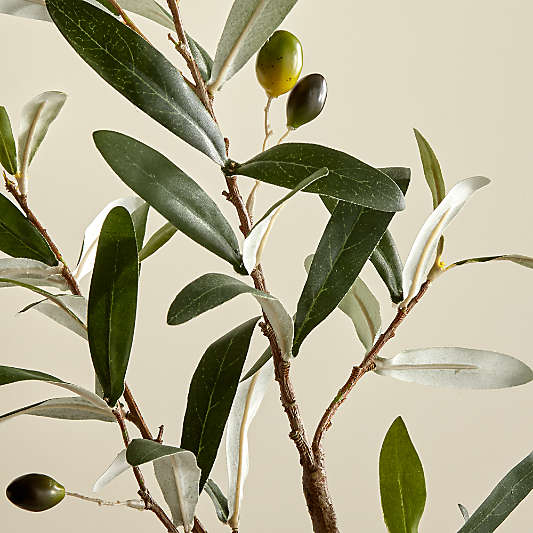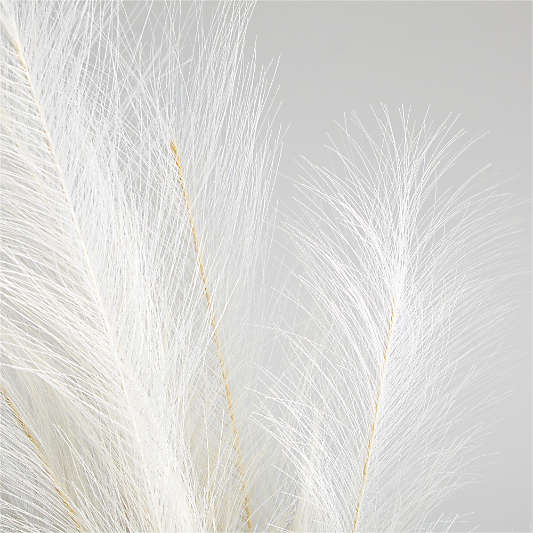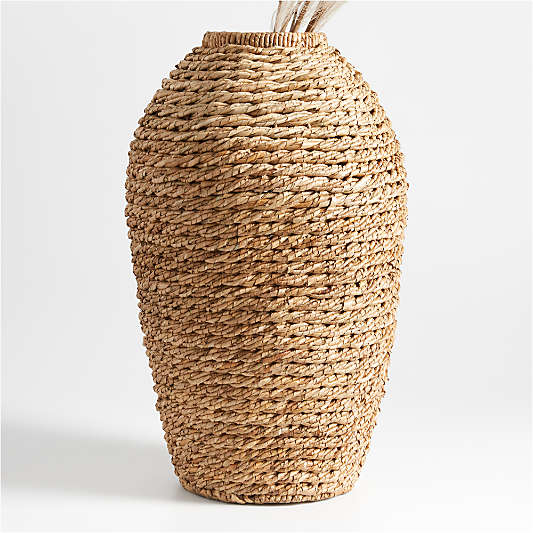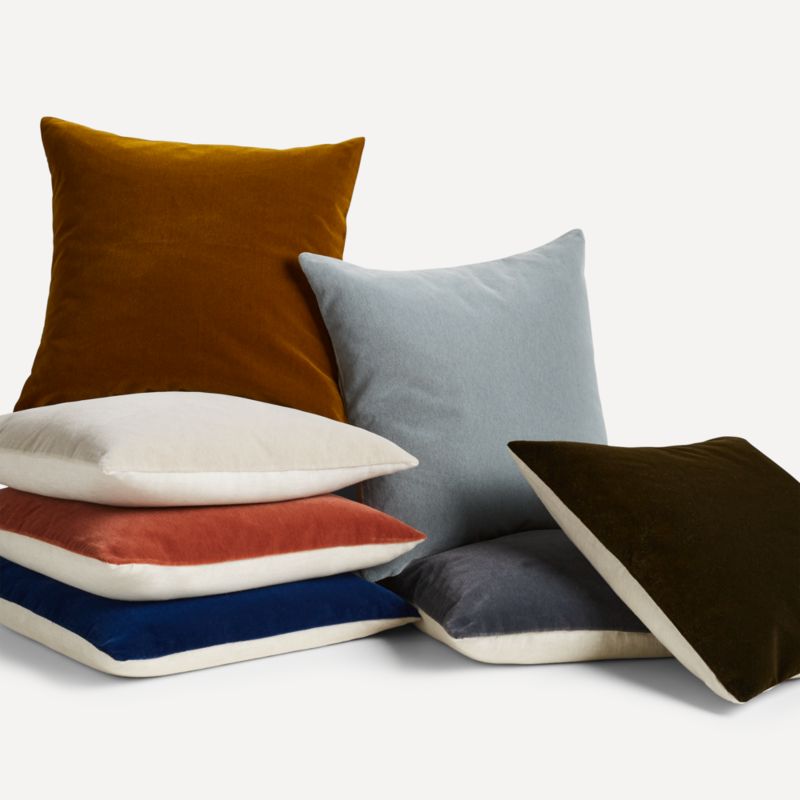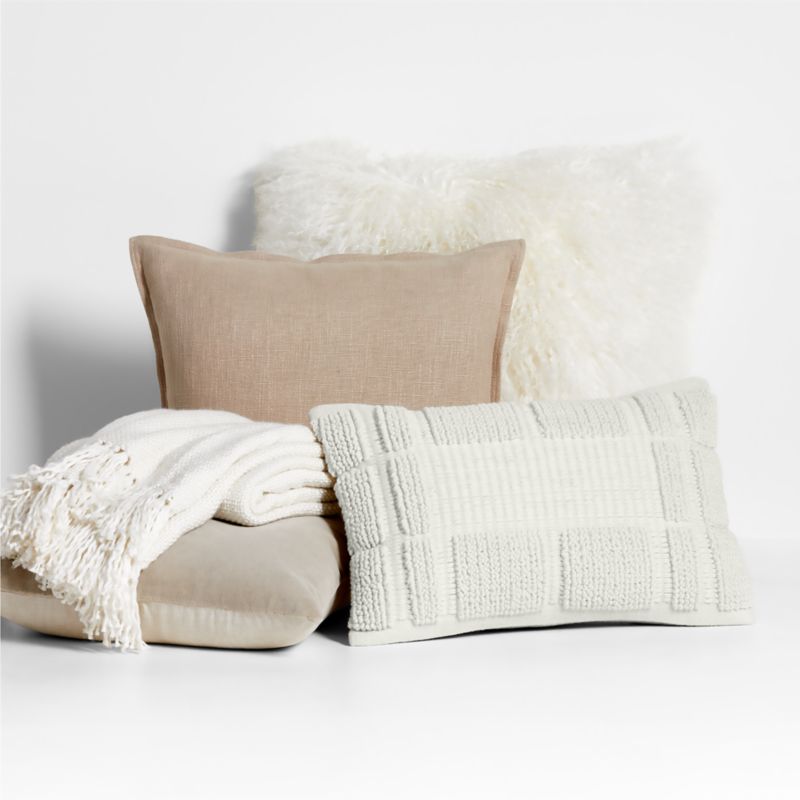6 min read

how to arrange flowers
styling botanicals like a pro
A gorgeous floral display instantly elevates any room with a sense of beauty and abundance. Even better, you don’t need to be an expert to learn how to arrange flowers for the moments when you really want your home to shine. Read on to learn our pro tips and advice for creating arrangements that look like the work of a professional florist.

gather the essentials
There are a few things you’ll need in order to begin building your flower arrangement. Here’s what we recommend you start with:
FRESH OR FAUX FLOWERS Choose flowers that are in good condition with no visible signs of damage or wilting. Quality faux stems will give you a realistic look that lasts—you can use them exclusively or mix with fresh flowers. Use a single type of flower for a chic, focused look, or a variety of flowers and filler depending on the season and type of vase you want to fill.
THE PERFECT VASE Find a vase that is appropriate for the type and size of flowers you are using. Tall vases are great for making a statement on entryway tables and mantels, while low vases allow for good sight lines at dining tables. Make sure the vase is clean and free of any dirt or debris.
SCISSORS You’ll use these to cut flowers to your desired length. Make sure they’re strong and sharp enough to cut through thick stems. If your shears are too dull, a sharp knife will do the job.
OPTIONAL MATERIALS If filling a wide-mouth vase, use floral tape or wire to help spread stems evenly and secure them in place. You may also want to add ribbon, twine or other decorative elements to add visual interest to your flower arrangement.


choose your vase & flowers
There are many things to consider when it comes to choosing which flowers to use for your arrangement. Different flowers are suitable for different occasions, such as roses for Valentine’s Day or peonies for spring. You’ll also want to decide on a color scheme. A monochromatic flower arrangement always looks beautiful and cohesive, while an arrangement of complementary flowers allows you to play with color, texture and height. Consider adding flowers with different textures for visual interest. You might use fluffy peonies or soft-petaled roses alongside spiky succulents or textured greenery.
You can never go wrong with flowers that reflect the season—think tulips in springtime and berries for the holidays. You can also mix and match flowers from different seasons to create a unique and varied arrangement.
Another thing to keep in mind is the location of your florals. Flower arrangements for buffets, consoles and entryway tables—in other words, places where people won’t be sitting down—can be tall and dramatic, so choose vases with a lot of height and long-stemmed, sturdy flowers to match. For coffee and dinner tables, try low, wide centerpiece bowls filled with florals that reach out, not up. The goal is to keep sightlines clear and never make guests feel as if they have to peer around flowers to hold a conversation.
PRO TIP We recommend snapping a few photos of your vase and the room where the flowers will be placed, then take them along for reference when buying blooms at your local farmer’s market, florists’ shop or grocery store.

building your flower arrangement
Once you’ve gathered all the necessary tools and selected which florals you’ll use, it’s time to put together your arrangement. Prepare the flowers by removing any leaves or thorns that will be below the water line in the vase. For a clean and modern look, remove all of the leaves. Next, cut the stems at a 45° angle—this helps the stems absorb water more easily.
Now for the fun part! Start adding your stiffest florals and materials to the vase—they act as supports for weaker stems. These flowers are the base for your arrangement and can (and should) be uneven. Cut some stems taller, some stems lower. The more imperfect, the more natural your arrangement will feel. Remember, nothing is permanent. You can always go back and rearrange stems to your liking.
Next come large, leafy greens. Fill these in the empty pockets between the stiffer stems. After greens come flowers with large blooms like hydrangeas–place these where they can cover any materials you may want hidden, such as wire or tape.
Now you can start adding longer florals for depth and dimension. The more organic the arrangement, the better it will flow with the rest of your home.
PRO TIP
Extend the life of your floral arrangement by topping off your vase with fresh water. When you notice the water start to turn cloudy, that means it's time for a change. Every few days, give the stems another trim and remove any leaves or petals that have submerged in the vase—these cause bacterial rot.


different types of flower arrangements
DRIED FLOWER ARRANGEMENT
We love the lasting beauty of a dried flower arrangement. There are endless varieties and colors to choose from. Experiment with different types such as strawflowers, statice, lavender, and baby’s breath. You can also use grasses, seed pods and other natural elements to add texture and interest that will last from season to season, year after year.
TALL VASE FLOWER ARRANGEMENT
Tall flowers need tall, narrow vases in order to support their lanky stems. Similar to dried florals, the options are endless. Build a tall and graceful flower arrangement using delphinium, tulips, gladiolus, snapdragons and more.
WINTER FLOWER ARRANGEMENT
Add a touch of beauty and cheer to the room with a winter flower arrangement.
Flowers in deep, rich colors like reds, greens and purples compliment the natural colors of the winter landscape. As far as variety goes, there are many types of flowers in bloom during the season, from orchids to anemones and winter berries. You can also add evergreens or pinecone for more depth and texture.
SUMMER FLOWER ARRANGEMENT
Capture the essence of the summer season with a bouquet of flowers in bright, vibrant colors. Create a loose, garden-style arrangement with wildflowers, zinnias, lilies and hydrangea. The options for summer bouquets are nearly endless.
AUTUMN FLOWER ARRANGEMENT
Fall is a time for warm, rich colors so build an arrangement in shades of orange, red, yellow, brown and purple. For an autumnal touch, incorporate unique foliage like oak or maple leaves as well as willow or cherry branches.



